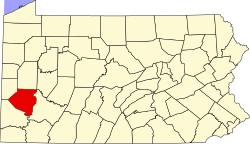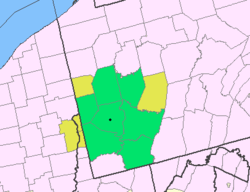Horning, Pennsylvania | |
|---|---|
Neighborhood | |
| Coordinates: 40°20′15″N79°59′29″W / 40.33750°N 79.99139°W | |
| Country | United States |
| State | Pennsylvania |
| County | Allegheny |
| Borough | Baldwin |
| Elevation | 1,037 ft (316 m) |
| Time zone | UTC-5 (Eastern (EST)) |
| • Summer (DST) | UTC-4 (EDT) |
| GNIS feature ID | 1177432 [1] |
Horning is a neighborhood in the borough of Baldwin in Allegheny County, Pennsylvania, United States. It was the residence of miners of the Pittsburgh Terminal Railroad and Coal Company #4 Mine, which had a racially integrated workforce, unusual in that era. [2]


